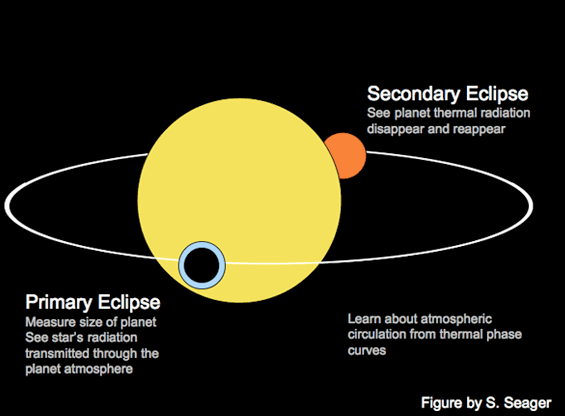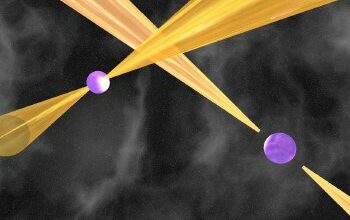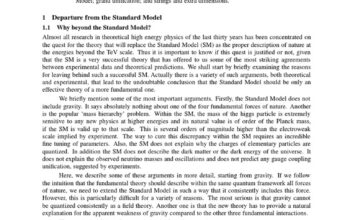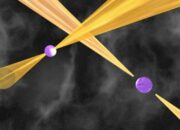The recent advancements in astronomical techniques have ushered in a new era of understanding regarding exoplanets, particularly highlighted by the detection of visible light emitted from these distant worlds. This breakthrough not only substantiates theoretical models of planetary atmospheres but also enhances our comprehension of their composition, structure, and the potential for habitability. The study of exoplanets is a frontier in astrophysics, poised at the intersection of curiosity and empirical inquiry, and the first direct capture of their visible light spectrum merits a thorough examination.
Exoplanets—planets orbiting stars outside our solar system—are enigmatic entities that have intrigued scientists since the first confirmed detection in the 1990s. As of now, thousands of these celestial bodies have been cataloged, each presenting unique characteristics. Despite this significant progress, the direct observation of light from an exoplanet is a monumental leap, offering a window into the physical and chemical processes transpiring on these distant worlds.
This direct detection of light relies substantially on the technique of spectroscopy, which allows astronomers to dissect the incoming light into its constituent wavelengths. By analyzing these spectra, researchers can infer the presence of various gases and compounds within the exoplanet’s atmosphere. This methodology is akin to a cosmic fingerprint, providing telltale signs about the atmospheric constituents—an endeavor that can reveal invaluable information regarding the planet’s potential for supporting life.
For centuries, the quest for understanding light has been fundamental to physics. The detection of light from an exoplanet expands upon this rich heritage, revealing unprecedented insights into the atmospheres of other planetary systems. It challenges pre-existing notions about the formation and evolution of planetary atmospheres, suggesting a need for reframing our cosmic perspectives. Notably, the presence of certain biomarkers—molecules indicative of biological processes—can now be sought after in the props of these spectra, igniting excitement regarding the possibility of extraterrestrial life.
In essence, visible light acts as a vehicle, transporting both scientific inquiry and the potential for transformative discoveries to the forefront of astrophysical research. With the prospect of probing the atmospheres of known exoplanets, scientists can gather data pertaining to temperature, pressure, and chemical composition in unprecedented detail. This analysis offers insights into how these atmospheres are akin to our own, or perhaps distinctly different, underscoring not only the variety of planetary systems but also the intricate workings of their evolution.
Moreover, this discovery endorses the necessity of advanced observational technologies. Space telescopes equipped with high-contrast imaging techniques and adaptive optics are allowing astronomers to mitigate the overwhelming brightness of host stars that often obscures the light emitted by orbiting planets. As these instruments evolve, the likelihood of capturing observable phenomena will burgeon, thereby amplifying the plethora of data available regarding exoplanetary systems.
The ramifications of this achievement extend into multidisciplinary realms, provoking inquiries that range from astrobiology to evolutionary biology. If, for instance, the signatures of organic molecules are detected, the scientific community will be propelled to examine the implications for life beyond Earth. Such a finding would not only lend credence to the idea of life existing elsewhere in the universe but would also serve as a catalyst for examining the parameters that define livable environments and the origins of life.
This shift also prompts an ethical conversation about the role of humanity in the universe. As we uncover evidence that suggests the potential for life beyond our pale blue dot, questions surrounding stewardship, exploration, and planetary protection arise. The notion that we may share our galaxy with other intelligent species poses profound philosophical questions about existence, responsibility, and the interconnectedness of all life.
Furthermore, the study of exoplanet light contributes to our understanding of stellar evolution and the dynamics within solar systems. The intricate interplay between a star and its planets, including the effects of solar radiation and gravitational influence, can drastically shape the characteristics of exoplanetary atmospheres. Observing light emitted from these planets thus becomes not just an inquiry into the planets themselves, but a broader investigation into the fate of entire solar systems.
One cannot overlook the technological ramifications of this pursuit. The instruments developed for the detection and analysis of exoplanet light are not just applicable to astrophysics; they have the potential to revolutionize fields such as materials science, telecommunications, and medical diagnostics. The methodologies honed through this astronomical lens can be transposed into terrestrial applications, yielding benefits that extend beyond theoretical realms.
In conclusion, the first direct detection of visible light from an exoplanet marks a transformative moment in the journey of mankind to understand our place in the cosmos. It encapsulates the synthesis of curiosity, innovation, and discovery that drives scientific progress. As we venture further into the universe and grapple with the implications of our findings, society must remain vigilant and introspective about the broader consequences of revealing the mysteries that lie beyond our home planet. The exploration of visible light from exoplanets holds the promise to not only change our understanding but also kindle wonder and awe about the vast, uncharted realms we have yet to explore. The cosmos, with all its mysteries still unraveled, continues to beckon humanity toward greater horizons of knowledge and understanding.












